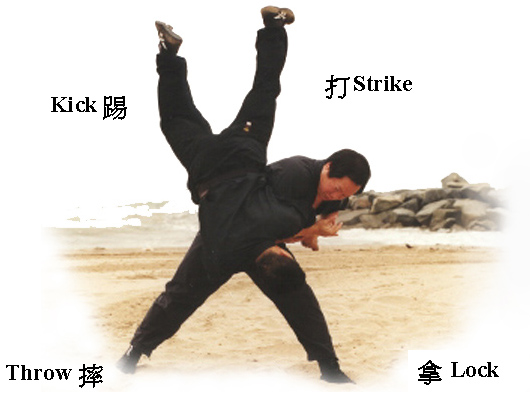So, let's start with some vocabulary - not because you need a lesson, but because we need common language...and it's a minefield. When you say "standing throws", that can mean "takedowns" or not, depending who you ask. Most ground-heavy styles have takedowns (go down with the guy), and some have throws (put them down, while you try to remain standing). I like a mix of the two, and many standing-grappling systems lack strong takedowns (like single-leg/double-leg), and some entirely miss training the transition to the ground, should you end up attached to the guy you're throwing (which is a regular thing).
So, probably what you want is a system with solid groundwork, and a good range of standing work. I wouldn't worry too much about standing locks. They're fun, and can be useful, but are less directly applicable - and less reliable - than locks once the guy's on the ground. So, if you get standing locks, that's cool. If you don't, don't sweat it.
Here's where it gets tricky - this mix can vary by school, as much as by art. If you want a wide range of throws/takedowns, something like Judo is a good bet. You can also get that at the right school with Jujutsu/Aikijujutsu-based grappling, but that can be a crap shoot if you don't know what to look for. Western Wrestling - if you can find classes in that in your area - will likely have a great ground game and solid takedowns, but maybe not many throws (by my definition, above). BJJ will probably have great ground game, but might or might have a limited amount of standing takedowns/throws.

